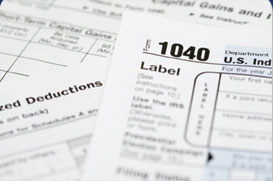
(760) 765-0343

September 2012 Tax Alerts
Develop an Early-Warning System for Problem Accounts
If you extend credit to your customers, some losses are inevitable. So unless you are willing to forgo the credit part of your sales, you have to figure out ways to control your bad debt losses.
Once you have extended credit to a customer, you have a stake in continuing the relationship even if you suspect there might be trouble a-brewing. You don’t want to crack down on a good customer too hard too soon; yet you don’t want to be “taken” by a debtor who has become unable or unwilling to pay. The problem is distinguishing between slow pay (which is bad enough) and no pay.
What you need is an early-warning system to detect a credit problem in the making, so you can stop additional sales to that customer and begin collection procedures in earnest. Here are some of the tell-tale signs that point to an account that is turning sour.
• The debtor has begun paying erratically, settling up on smaller invoices while larger ones just get older,
at the same time disputing specifications or terms.
• The debtor fails to return your phone calls or shows unusual annoyance at your inquiries.
• Your requests for information, such as updated financial statements, are ignored.
• The debtor places jumbo orders and presses you for a higher credit limit.
• Despite the problems you are having, the debtor tries to coax you into providing a good credit report to
another supplier.
• You get word that the debtor’s credit rating has been downgraded.
• Any one of these hints of trouble can be the handwriting on the wall. Two or more and it’s time to crack
down. Take a firm stand; turn up the heat on your collection efforts with this debtor, and make no more
sales unless they’re cash on delivery.
Consider Optional Methods of Calculating Self-Employment Income
When it comes to financial planning, the more options you have, the better your planning can be. An area that may offer planning options is the self-employment income calculation.Self-employment income is the net amount you earn from your unincorporated farm or other business. The self-employment tax you pay is based on that amount, so when your farm or business experiences a loss or a low-income year, you might owe little or no self-employment tax on your federal tax return. Yet in some cases, it can make sense to elect an optional method of calculating your self-employment income — in effect, reporting income on which you'll pay self-employment tax.
Though paying tax when you don't need to seems like an odd planning move, there are tax and non-tax reasons to consider the strategy. Qualifying for social security disability or retirement benefits is one non-tax reason. As you know, you need a minimum number of "credits" — generally 40 — to be eligible to receive benefits. Credits are based on qualifying earnings, such as self-employment income.
Choosing to report self-employment income under an optional method — and paying the resulting tax — gives you a way to accumulate up to four credits per year.
In addition, using an optional method to calculate your self-employment earnings may make you eligible for tax credits, including the earned income credit, which can generate a refund even if you owe no tax.
Please call to discuss these and other financial planning strategies. We'll help you make the most of your options.
Next >
Correspondence: P.O. Box 1934, Julian, CA 92036 E-mail: rebeccaorjan(at)luersdyercpa.com
(760) 765-0343 (760) 765-0150 Fax
(760) 765-0343 (760) 765-0150 Fax



© Luers & Dyer, CPA, LLP. All Rights Reserved.